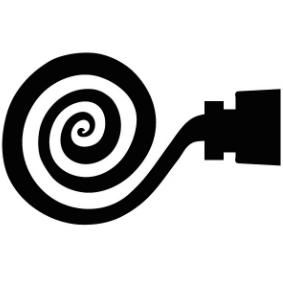"Hopi Kachina Maker" (ca. 1970s) [Raw footage]
[Note: this video of raw footage frequently jumps around from image to image and the narration does not always fit what’s onscreen.] Camera zooms in on a color illustration of Walpi village on First Mesa; hands of Hopi kachina/katsina (tithu/tihu) doll artisan Hubert Honanie (Water Clan, also known as Dawa-Wufto or "Climbing Sun") carving a basic human shaped block of wood; camera zooms out to head and shoulders shot as he continues and speaks to camera; black and white photo of a Hopi girl standing on a ladder leaning against an adobe wall then camera pans up the building to a person standing two floors up; unpainted, unadorned flat snipe kachina doll forms; close ups on two completed kachinas; close up on a kachina with a painting of a frog body on the back of its head and it rotates around to the front; close up on two more kachinas; close up of a color illustration of a Hopi man posing with a hoe or shovel in a desert corn field; various shots of Honanie in his workshop carving a figure; black and white photo of Walpi or another village; black and white photo of doorway with baskets, corn and squashes before it; back to Honanie in his workshop holding up the knife he uses, examples of his work; various close ups of completed kachinas; color photo of Walpi; various close ups of completed kachinas; then close ups of Honanie talking; various close ups of completed Kachinas rotating on a platform; kachinas being shaken so the bells they’re holding ring; close up of a completed Sun kachina holding a tiny crook stick and a rattle; close up of a completed Ahote kachinas already shown rotating on platform; close up of a Wolf kachina holding a long stick, then a black (Ogre or Hú?) kachina; more on the black kachina Honanie points to its shield with symbols; another close up of the same kachina coating; close up of another kachina; close up of a”helper” kachina carrying a boy piggyback; close ups of male and female Salako kachinas; shots of a group of kachinas; back to Honanie in his workshop demonstrating how to carve and adorn a flat kachina; Honanie carving a non-flat doll and then shows a full-size headdress (as seen on the Salako kachina doll); back to carving the figure; Honanie holds a smooth but uncarved piece of cottonwood, then a handcrafted Hopi toy top; interview continues in the workshop; various shots of Honanie carving the figure and being interviewed; Honanie holding a small round and then a flat kachina, and then points to the black (Ogre?) kachina, continues to address the interviewer’s questions; back to carving; close up of his silver bow guard, his belt, necklace, and tools; shots of Honanie carving from behind and close ups; back to color illustration of Walpi village, then a black and white photo of same.
IMPORTANT CULTURAL WARNINGS FOR CHILDREN AND TRIBAL MEMBERS:
IMPORTANT: 00:00:49-00:00:58 shows wooden effigies that are sacred and not meant to be shown.
IMPORTANT: 00:05:50 Mr. Honanie explains information that uninitiated children should NOT be privy to.
--Andie Belone (Hopi), 2012 https://aifg.arizona.edu/film/hopi-kachina-maker
Also, to read more about Hubert Honanie/Dawa-Wufto, see Climbing Sun : The Story of a Hopi Indian Boy by Marjorie Thayer, Anne Siberell, and Elizabeth Emanuel.




